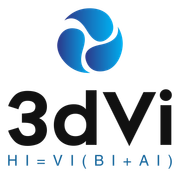Powering Human Intelligence
Custom Vi solutions
Technology operations
We create visually intelligent solutions that support structured data, Bi, Ai, unstructured data and provide output modernization to drive business growth.
Innovation for revitalization
Our team helps our business customers evaluate inefficiencies and adopt our innovative solutions that are tailored to their operational needs.
Connectivity drivers
Secure connectivity is essential for today’s business. We develop proprietary applications designed to work with our business customers specific needs.
Alata
Alice
Open Sans
Noto Sans
Bebas Neue
Great Vibes
Rock Salt
Exo
Belgrano
Overlock
Cinzel
Indie Flower
Staatliches
Roboto Slab
Lato
Noto Serif
Open Sans
Montserrat
Ubuntu
Rubik
Delius
Amiri
Montserrat
We're proud to drive technology forward. Rely on our tech solutions to drive your growth.
Digital drivers tailored to you

3dVi developed an application that made connecting with my team in the field a more streamlined process.
Jane Faber

3dVi partnered with my IT team to create a new portal for customers. Communication is better than ever.
John Smith

Its tech solution enhanced our processes, but their aftercare service wowed my team. The continued support is awesome.
Madelaine Taylor



